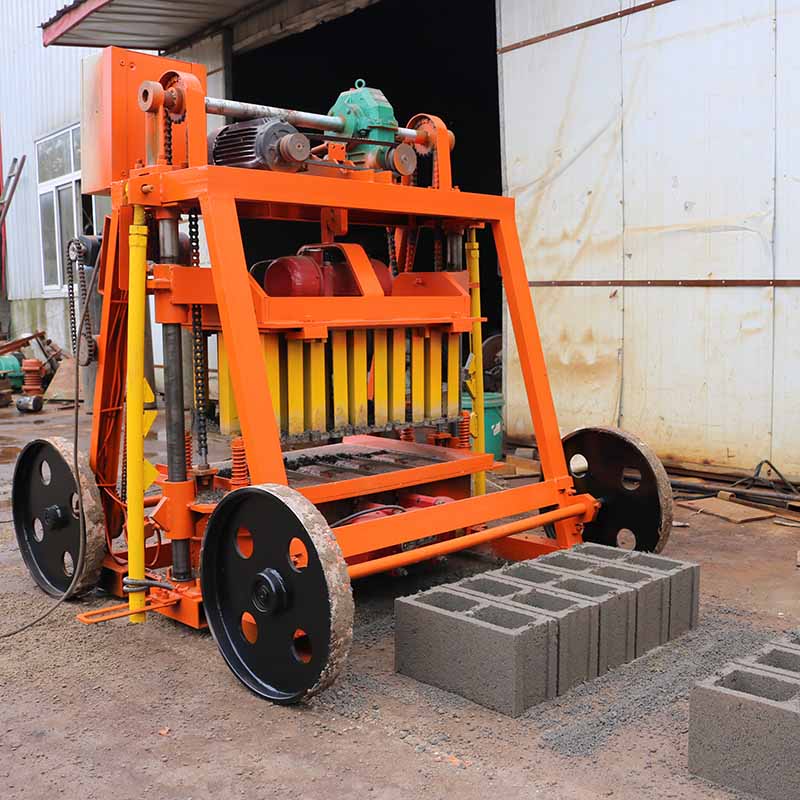
Image source:Aiwei block machine
Introduction
The art of brick making, a cornerstone of human civilization, has undergone a remarkable transformation over millennia. What once relied on manual labor and traditional methods has evolved into a sophisticated process driven by automation and advanced technology. The journey of brick making machines reflects not only the evolution of construction techniques but also the ingenuity of human innovation. In this article, we embark on a journey through time to explore the fascinating evolution of brick making machines from their humble beginnings to the cutting-edge automated systems that shape modern construction practices.
1. The Early Days: Manual Labor and Traditional Techniques
Brick making has ancient roots, dating back to civilizations like the Sumerians and Egyptians. In these early times, bricks were formed by hand, with clay molded and shaped by skilled laborers. The process was labor-intensive and time-consuming, limiting the scale of construction projects.
2. The Industrial Revolution: Steam-Powered Innovation
The Industrial Revolution brought about a significant shift in brick making with the introduction of steam-powered machines. Inventors and entrepreneurs sought ways to mechanize the process, leading to the creation of the first brick-making machines in the 19th century.
- The Boulton and Watt Machine: James Boulton and Matthew Watt developed a machine in 1818 that used steam to power the clay preparation and brick molding processes.
- Hoffmann Kiln: The Hoffmann kiln, patented in the mid-19th century, marked a significant advancement in brick firing technology, allowing for more efficient and controlled firing processes.
3. The Transition to Hydraulic Systems
As the 19th century progressed, brick making machines transitioned from steam power to hydraulic systems. These innovations improved the compaction and quality of bricks, paving the way for larger-scale production.
- Trevithick’s Brick Press: Richard Trevithick’s hydraulic press, developed in the early 19th century, provided greater pressure and control during the molding process.
- Semi-Automatic Machines: Machines that combined hydraulic pressure with semi-automatic operation allowed for higher productivity and improved brick quality.
4. The Rise of Automation and Modernization
The 20th century witnessed a rapid evolution in brick making technology, with automation becoming a central theme. Advancements in machinery, design, and materials propelled brick making into a new era.
- Fully Automatic Machines: Machines capable of fully automating the brick making process emerged, streamlining clay preparation, molding, and firing.
- Innovations in Extrusion: Extrusion-based machines allowed for the continuous production of bricks, reducing cycle times and increasing efficiency.
5. 21st Century Innovations: Digitalization and Smart Technology
The 21st century has brought a new wave of innovation to brick making machines, with digitalization and smart technology revolutionizing the production process.
- Computer-Aided Design (CAD): CAD software enables architects and engineers to design intricate brick patterns and textures, which can be translated directly into machine operations.
- IoT Integration: Internet of Things (IoT) technology allows for real-time monitoring and data analysis, enabling predictive maintenance and optimization of machine performance.
6. Sustainable Practices and Green Brick Making
In recent years, the evolution of brick making machines has also embraced sustainable practices, addressing environmental concerns and resource scarcity.
- Recycled Aggregates: Modern machines can incorporate recycled materials, reducing the demand for virgin resources and waste generation.
- Energy Efficiency: Advancements in firing techniques and insulation have led to more energy-efficient brick production, contributing to reduced carbon emissions.
7. Challenges and Future Prospects
While the journey of brick making machines has been one of remarkable progress, challenges remain, particularly in terms of cost, maintenance, and skilled labor.
- Initial Investment: Acquiring and setting up automated machines can be expensive, making it challenging for smaller manufacturers to enter the market.
- Maintenance Expertise: The complexity of modern machines requires skilled technicians for maintenance and repairs.
Conclusion: Bridging the Past and Future
The evolution of brick making machines reflects humanity’s ceaseless quest for efficiency, innovation, and sustainable progress. From the manual labor of ancient civilizations to the precision of modern automated systems, brick making machines have revolutionized construction practices and shaped the built environment. As the industry continues to embrace digitalization, sustainability, and smart technology, the journey of brick making machines underscores the enduring spirit of human ingenuity, forever bridging the past and the promise of an automated, sustainable, and innovative future in construction.
